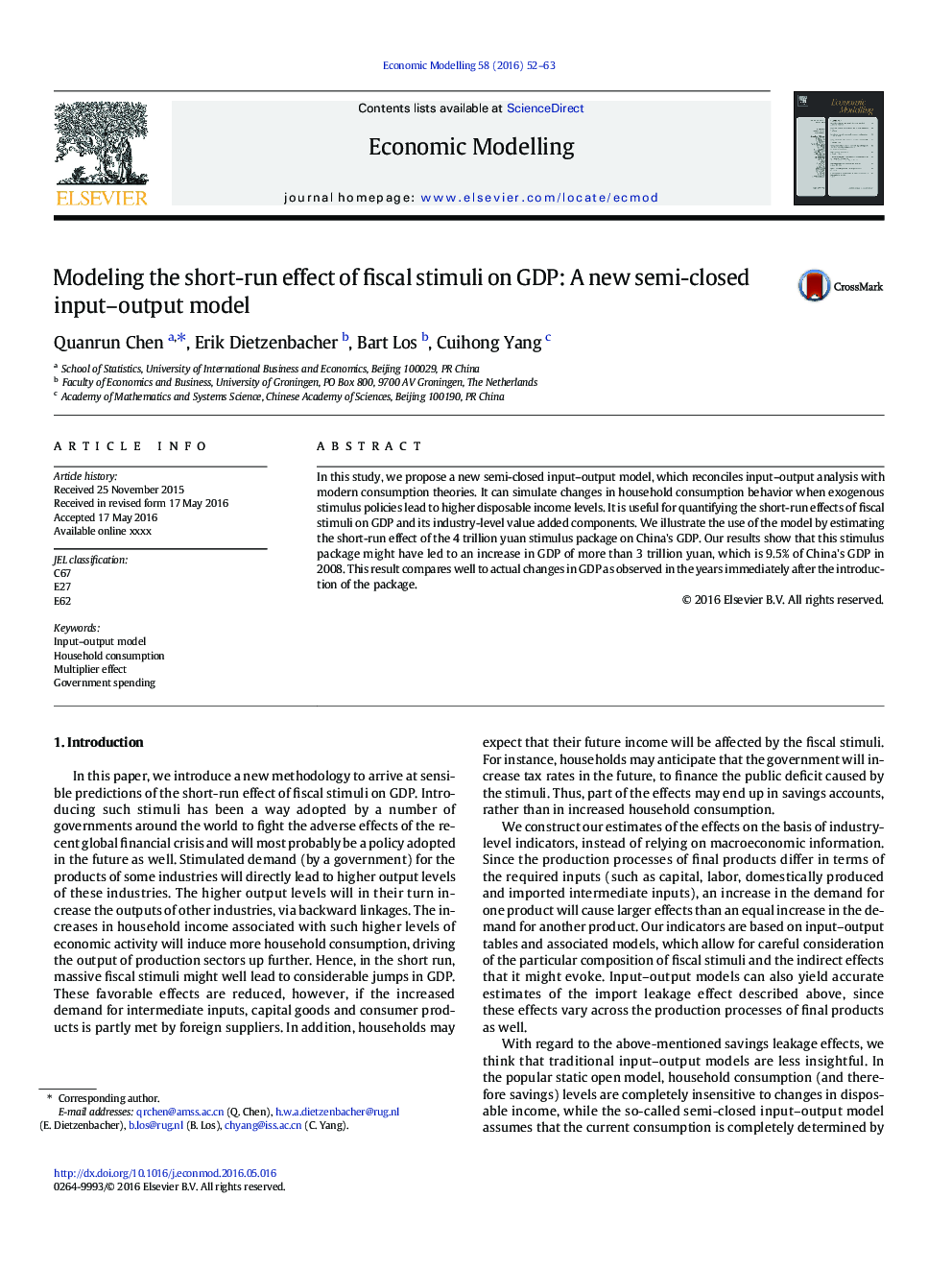| Article ID | Journal | Published Year | Pages | File Type |
|---|---|---|---|---|
| 5053461 | Economic Modelling | 2016 | 12 Pages |
Abstract
In this study, we propose a new semi-closed input-output model, which reconciles input-output analysis with modern consumption theories. It can simulate changes in household consumption behavior when exogenous stimulus policies lead to higher disposable income levels. It is useful for quantifying the short-run effects of fiscal stimuli on GDP and its industry-level value added components. We illustrate the use of the model by estimating the short-run effect of the 4Â trillion yuan stimulus package on China's GDP. Our results show that this stimulus package might have led to an increase in GDP of more than 3Â trillion yuan, which is 9.5% of China's GDP in 2008. This result compares well to actual changes in GDP as observed in the years immediately after the introduction of the package.
Related Topics
Social Sciences and Humanities
Economics, Econometrics and Finance
Economics and Econometrics
Authors
Quanrun Chen, Erik Dietzenbacher, Bart Los, Cuihong Yang,
